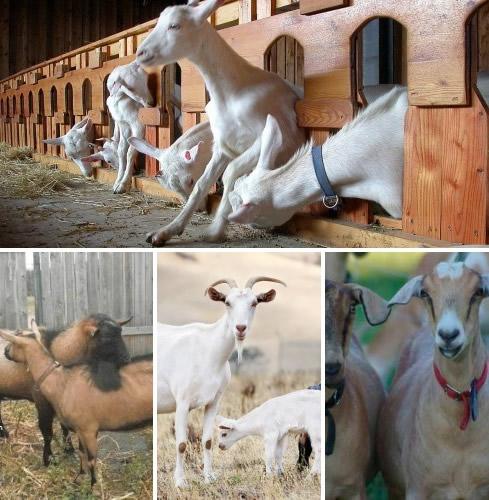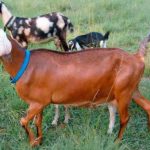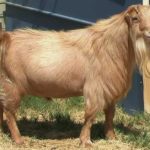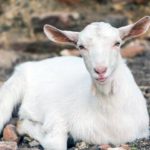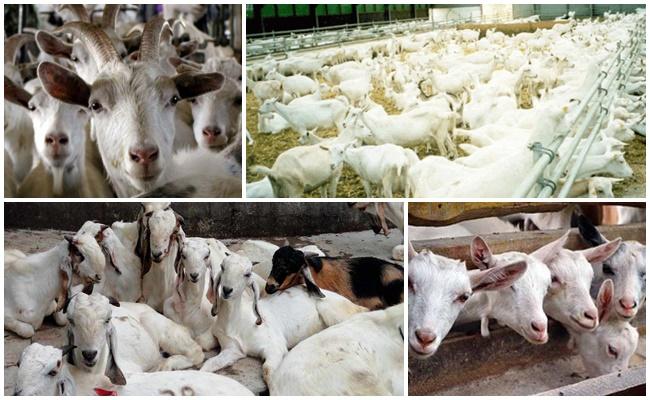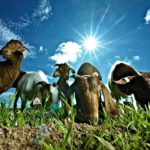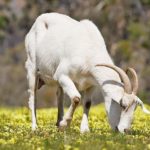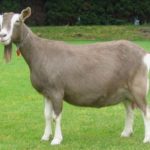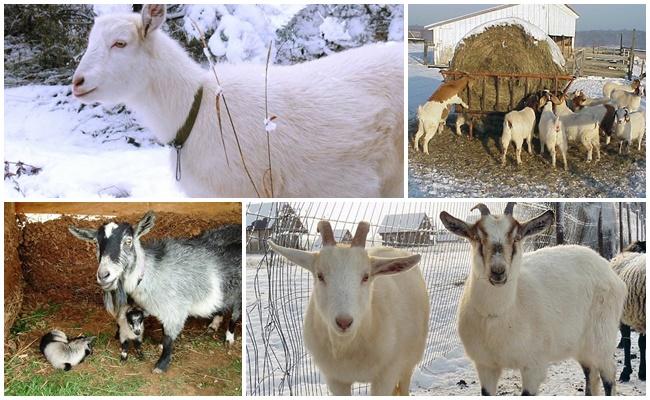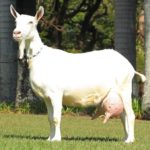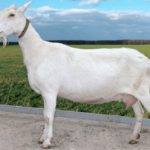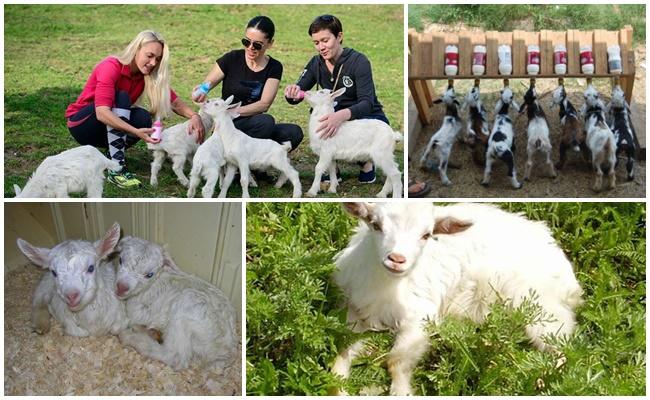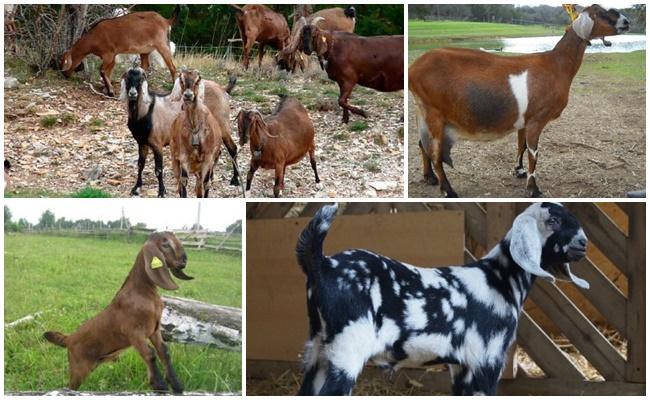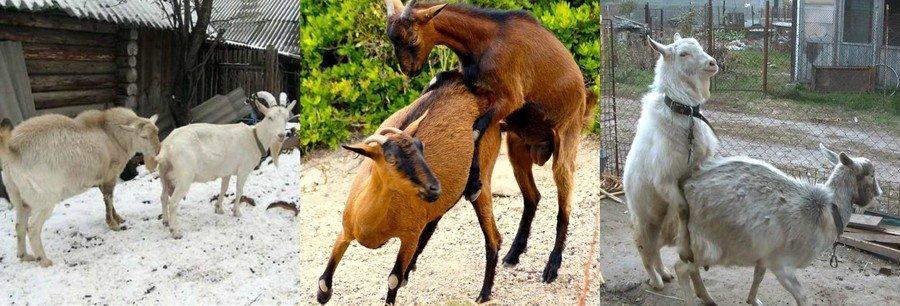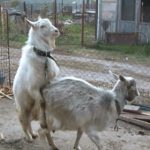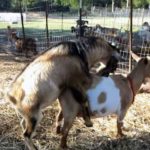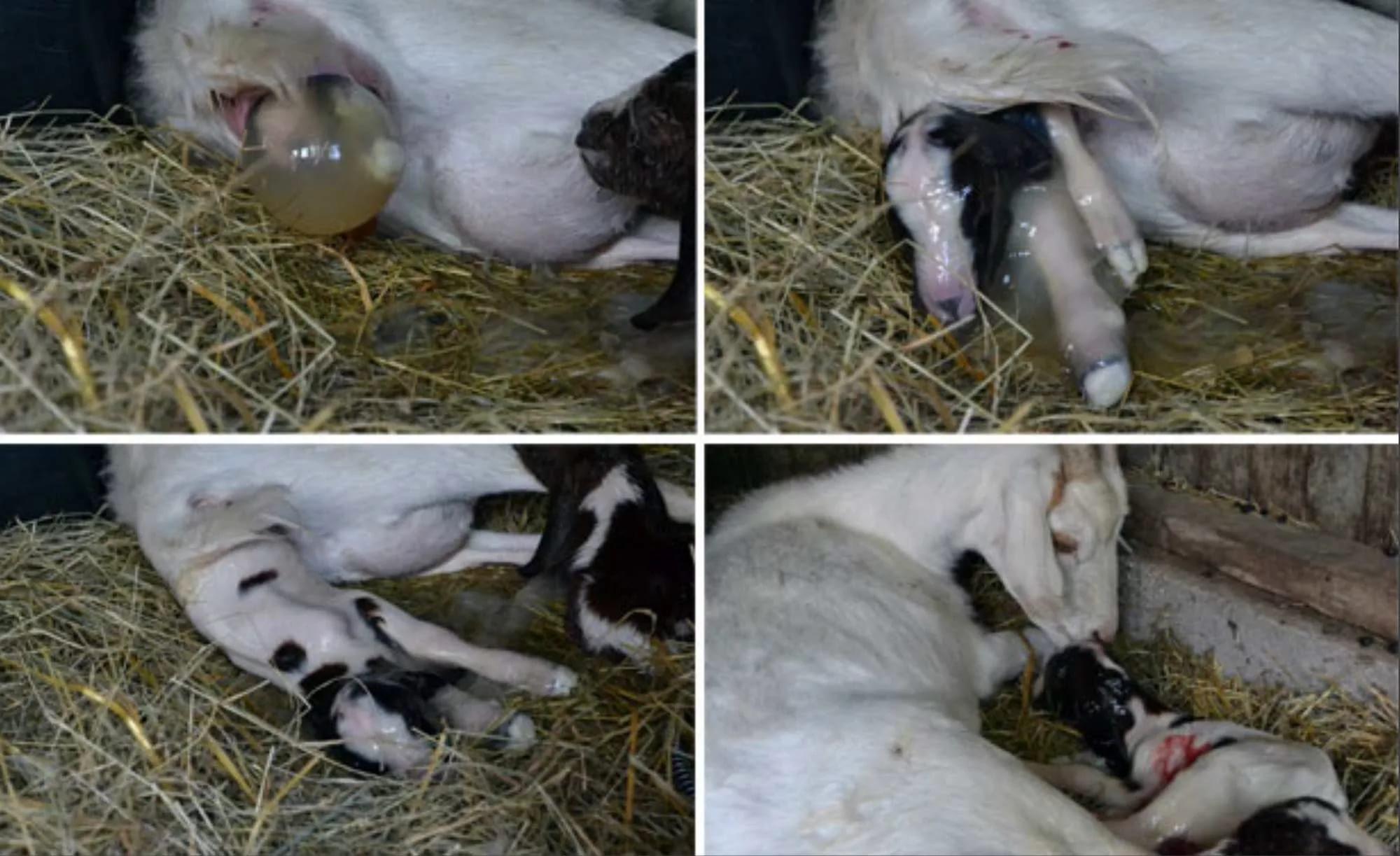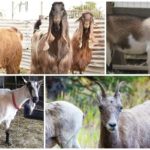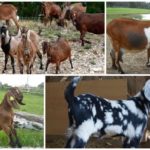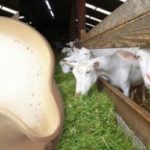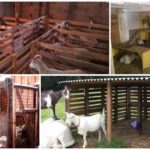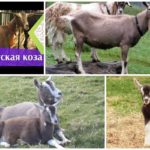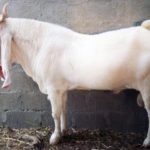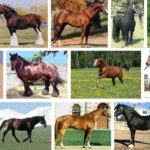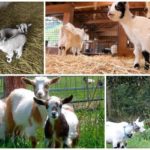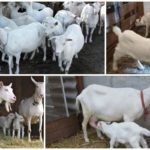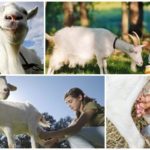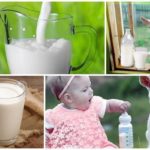Small livestock does not require the same care and maintenance costs as cattle. Goat breeding is becoming popular because the abundance of breeds allows you to choose animals suitable for growing conditions and food supply. Breeding goats gives the greatest effect in terms of productivity of meat, wool, and milk, but requires certain knowledge and experience.
- Breed selection rules
- Dairy
- Downy
- Meat
- Decorative
- Preparatory activities
- Premises requirements
- Feeder and drinker
- Purchasing breeding animals
- Content Features
- Spring, summer and autumn
- in winter
- Animal care
- For the females
- For newborn goats
- For the young
- Behind the goats
- Breeding rules
- Selection of animals for breeding
- Mating
- Signs of the hunt
- Types of mating
- How to do it correctly
- Pregnancy and lambing
Breed selection rules
Specialization in goat farming is based on demand and profitability of the final product. In turn, the profitability of a farm depends on the compliance of the requirements for keeping animals with climatic conditions, food supply, and financial capabilities.
Dairy
Dairy goats are selected based on productivity and maintenance and care requirements. The most productive breeds are considered to be from Switzerland:
- Saanen;
- alpine;
- Toggenburg.
If well maintained, Saanen goats can produce up to 1000 liters of milk per year (8-10 liters per day with 2 milkings). Peak productivity is after 4 lambings. Average fertility is 1.8-2.5 kids per queen.
The Alpine dairy breed pleases breeders with an annual milk yield of up to 1500 liters and an annual offspring of 2 kids. Toggenburg goats are inferior in size and milk yield to Saanen and Alpine goats, but surpass them in milk fat content and are unpretentious to the conditions of detention.
In Russia, Swiss females are rarely found in the goat population due to the high cost of breeding individuals. Among farmers, when breeding goats for milk, the Russian White breed and its hybrid with the Saanen goat, the Gorky breed, are popular. Growing these breeds gives good results: with a lactation of 9-10 months - from 500 to 700 liters of milk with a fat content of up to 5%.
Downy
Goat fluff is highly valued, from which the finest thread is produced for knitting the famous Orenburg scarves and other woolen products. From downy goats of Orenburg and Don breeds they receive 300-400 grams of fluff per individual, as well as up to 300 liters of milk per year and meat that is not inferior in taste to lamb.
Meat
Breeds bred for meat have poor indicators in terms of milk yield and fur quality.Animals are distinguished by their large physique, large mass, and fertility. The most famous breeds in Russia - Boer, Kiko, Spanish. A distinctive feature of goat meat is its dietary qualities and the absence of a specific taste.
Decorative
Dwarf breeds, which include the Cameroonian pygmy and the Nigerian dwarf, were bred in the USA and have African roots. Small animals require little space and feed. During the year they produce up to 300 liters of milk with a fat content of 6%.
Preparatory activities
To breed animals, you need goat houses, pens, feeders and drinking bowls.
Premises requirements
The premises in which goats will be kept must be dry and well ventilated. To avoid drafts, the entrance to the goat's coop is made through a vestibule. Floors can be wood or earthen. The following is used as bedding:
- straw;
- sawdust;
- pine needles
Lighting is provided natural and artificial: through high windows and electrical appliances. In autumn and winter, the light should be on 12 hours a day.
1 animal requires at least 25 square meters. It is necessary to have partitions inside so that male goats, young animals, and newborn kids can be separated from the herd.
Feeder and drinker
Feeders and drinking bowls are installed at a height of 30-40 centimeters above floor level. There should be a separate feeder for each animal.
Purchasing breeding animals
Breeding animals must have passports, certificates, and certificates from a veterinarian. It is more profitable to purchase a goat after lambing, no older than 7 years. She must have a smooth, shiny coat, 32 teeth, and external characteristics that correspond to the description of the breed.
Content Features
In temperate latitudes, with cold winters and autumn rains, goats are kept in a pasture-stall method.
Spring, summer and autumn
In the warm season, goats are free to graze. Animals eat green matter, tree bark, branches, and young shoots. As additional food, the breeder gives them a little hay in the morning and evening, as well as succulent food. Constant access to fresh water in the pasture and in the goat barn is necessary.
in winter
With the onset of cold weather, the goats are transferred to the goat shed, while maintaining daily walks in the fresh air in the pen. The duration of walks depends on the air temperature and the rock. Downy and long-haired goats are not afraid of the cold. On the contrary, frosty weather stimulates the growth of thick undercoat.
Animal care
The goat herd has a clear hierarchy by gender and age. Each group has its own physiological characteristics and requires special care.
For the females
It is important for goats that the room where they are kept is dry, clean, and free of harmful odors. Animals must have beds on which they sleep, separate feeders and drinking bowls. The floor is covered with bedding. The common pen is cleaned once a week, individual pens are cleaned daily. Goats need to be cared for all year round:
- trim hooves;
- trim the hair from the udder;
- comb out fur;
- treat the skin with a soda solution for lice;
- get vaccinated.
Goats are social animals and can be kept with other livestock and poultry, with the exception of chickens (as a source of lice). It is important for dairy goats to have easy access to water.
For newborn goats
There are two ways to raise newborn goats: leaving them in the care of the uterus or removing them to a separate room. In the first case, the cubs are fed by a goat. The breeder's responsibilities include milking after feeding to avoid mastitis and to preserve milk yield. For the first 20 days, goat kids receive colostrum, and then milk 4 times a day. On day 21, they are given chalk and salt (5 grams per day) as complementary foods. At 3 months the norm is increased to 10 grams.
When kids grow up without a mother, they receive colostrum and milk from human hands. The goat is milked to obtain the maximum amount of product.
For the young
In the second month, concentrates are added to milk, starting from 50 grams. At 3 months the norm increases to 300 grams, the kids are transferred to an adult diet. They should drink plenty of water and spend as much time as possible in the fresh air. Young animals do not require as much space as adult animals. A pen can be equipped at a dacha, where the goat kids will gain from 3 to 5 kilograms per month during free walks and with the right diet.
Behind the goats
It is profitable to breed goats if the number of females is more than 50 individuals. The village keeps 1 goat, which provides mating for all females. In dairy breeds, males are kept separately from milking goats so that the milk does not acquire the smell of goat meat. For meat and down breeds, and for pasture breeding, this does not matter. The role of goats is to continue the breed. During the breaks between matings, the breeder is fed in the same way as goats, preventing him from becoming obese. During mating, the proportion of concentrated feed containing proteins in the diet is increased.
Breeding rules
Breeding a pedigree herd on a private farm includes the purchase of a pedigree animal and proper organization of coverage.
Selection of animals for breeding
Before purchasing a goat, you should carefully examine it to determine whether it is healthy, check its age, and compare the description of the breed with its appearance.
The main characteristics by which breed varieties can be identified:
- Dairy. The head is light, the neck is thin, the ears are small and erect, the legs are straight, the hooves are strong, the udder is pear-shaped or cone-shaped. The coat is thin, shiny, adjacent to the croup.
- Downy ones. Covered with down from the eyes to the hocks. The length of the down is from 6 to 10 centimeters (depending on the specific breed). The legs are straight, the hooves are black, strong. Medium sized horns.
- Meat. Large head, strong bones, height at the withers - 70-90 centimeters. The ears are long and droopy.
The milk production of a goat is checked by the udder: it should be firm, elastic, covered with sparse hairs, with nipples of medium length.
Mating
At home, a breeding goat is found for goats. An adult, healthy male covers up to 50 females (2 matings per day). For young goats who have come to hunt for the first time, a goat is selected from 6 months to a year.
Signs of the hunt
A goat does not become pregnant, which means it does not reproduce, until it goes into heat. The period when she is ready to meet the male lasts 24-72 hours. The animal looks restless, irritable, wags its tail, and darts frequently. The genitals swell and secrete mucus.
Types of mating
There are 4 methods of knitting:
- artificial (on large farms, without a male);
- manual (under human supervision);
- free (with herd keeping of goats and goats);
- harem (one goat with 20 goats in heat).
For beginning goat breeders, hand-tying is best.
How to do it correctly
They begin preparing for mating from the fence on the site. A small area is separated with a net, the goat is tied and the goat is released. After two effective cages, the male animals are bred and the behavior of the goat is observed. There are no trifles in goat farming, especially when raising breeding stock.
Pregnancy and lambing
The duration of gestation in goats lasts, on average, 150 days (+/- 10 days). Most often, pregnancy is multiple: 2 and 3 kids. The number of cubs does not depend on the number of cats. Goat cover determined by external signs:
- change in the shape of the genital loop;
- swelling of the udder;
- enlargement of the abdomen.
Not all goat breeders are able to listen and feel the fruit. This is impossible to do in downy, long-haired animals.
An important preparation for lambing of dairy animals is the start-up, during which the goats stop milking. This is necessary for the formation of the fetus and preparation of the animal’s body for postpartum activity: the production of colostrum. If you do not stop milking before lambing, the amount of colostrum will not be enough to feed the goat offspring.
During the launch, after giving birth, a special diet is established for the goats, thanks to which it will give birth to healthy kids and maintain milk production.
In goats of meat, downy, and wool breeds, lactation most often begins after the birth of the cubs and ends with their transfer to pasture. During pregnancy and after lambing, they also need a special diet with easily digestible food rich in microelements and vitamins.

